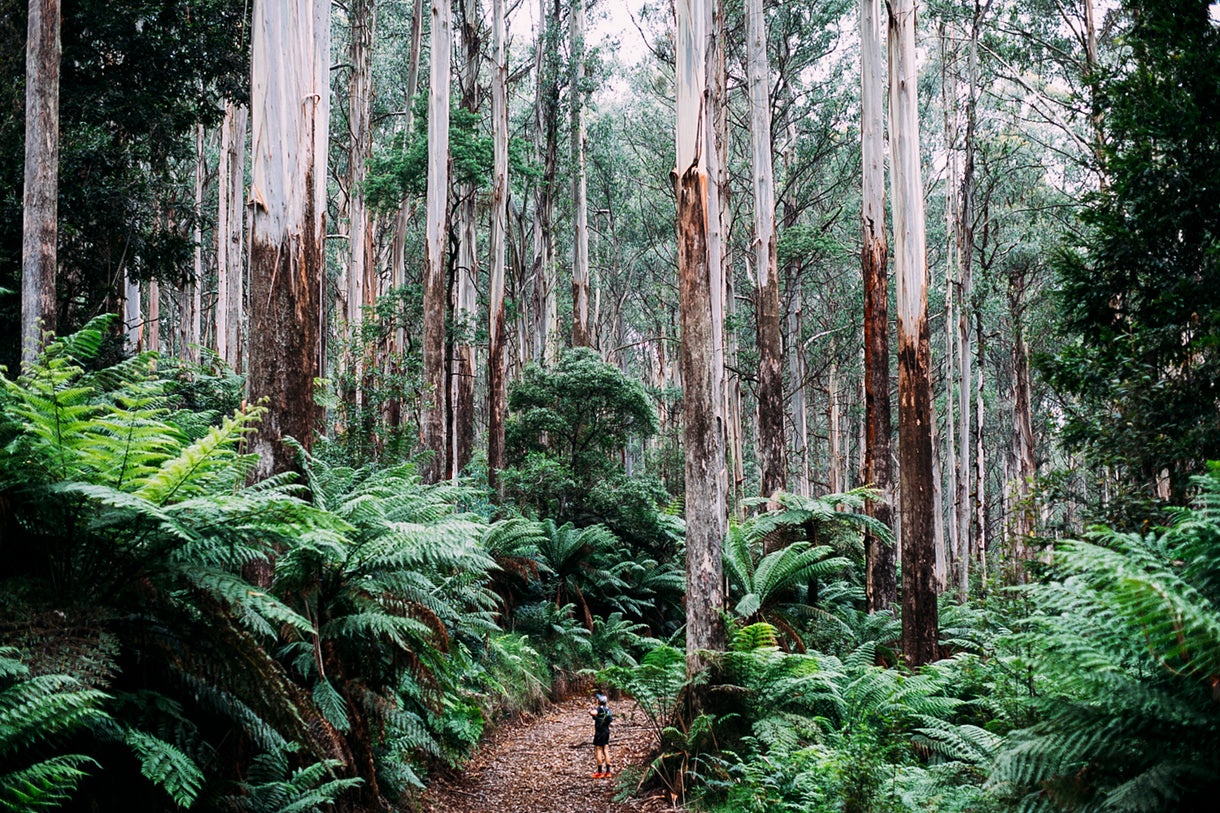We’ve arrived in Tahiti in the offseason to relish in uncrowded line-ups. Specifically, to bodysurf Teahupo’o. As local historian and biologist Peva Levy reminds us, Teahupo’o is not actually the local name for the wave, but the name of the land nearest to the break. He explains further the traditional name of the wave – Pererure, meaning “spinning top” – was bestowed by the wave’s first surfer, a young girl from Raiatea named Vehiatua.
As Peva Levy tells it: “Vehiatua, a beautiful and young girl from Raiatea, decided to come to Tahiti for the contest in the district of Hui, yes Hui, the name of the district before it became Teahupo'o, the ‘wall of skulls.’ Vehiatua was the daughter of a chief from Raiatea. She travelled to Hui with her two servants and stayed in a house in the valley of Fauoro, which is just in front of the spot. The contest was supposed to be at the shorebreak by the riverbank. The contest was supposed to start the next early morning, with all the best surfers of the islands. Everybody was there waiting for the only girl from Raiatea but she did not show. People started to be nervous and start saying that Vehiatua was afraid to come and measure herself against the best surfers.

“Some time after she arrived, she told everybody that she was not going to surf because the waves where too small for her. Everybody laughed and thought that she was just afraid, so the contest did not start. The next morning her two servants came early at the shore break to have a look but it was still to small so Vehiatua did not come for the contest. People did not want to wait more, but they wanted to see Vehiatua, the first girl who was rumoured to have hell of a nerve to ride a wave.
“The best surfer was the young chief of Hui. He couldn’t wait to see this girl from Raiatea on a wave. Early the next morning, Vehiatua heard a big bang coming from the reef. All the population knows that when you hear that big bang it means that the waves are big. Vehiatua told her two servants to go by the shorebreak and tell every body that she is coming for the contest.
“Everybody was waiting for her at the shorebreak when she arrived with her board. To everyone’s surprise, she did not stop there but kept on walking until the end of the black sand beach point, and then she jumped in the sea and swam toward Hava’e, the reef pass. All were very surprised to see her swimming toward Pererure as the waves where big and no one could believe that a girl will be able to surf there. She waited a little bit and then surfed her first wave, and a second one, and more and more. The other surfers could not believe their eyes. They all joined her over there but could not surf as it was big. Vehiatua was the champion and the first who rides that wave.

“Unfortunately, Vehiatua didn’t long reign over her wave. Soon after that first surf the local chief was overcome with jealousy at Vehiatua’s supreme wave-sliding prowess, so he killed her, hoping to inherit her bravery and skill.”
The proficiency and joy with which Tahitians rode waves was obvious even to those seeing wave sliding for the first time. In his travel log of 1788, British seaman James Morrison mentions the community elation that accompanies the arrival of swell: “When the Westerly Winds prevail they have a heavy surf constantly running to a prodigious height on the shore... The part they choose for their sport is where the surf breaks with most violence... They watch the rise of a surf sometimes a mile from the shore… at this diversion both sexes are excellent.” Historic accounts describe Tahitians skilfully harnessing the energy of the pocket, mostly prone on little wooden planks (surfing horue), but stand-up surfing was not uncommon, nor was bodysurfing.

Without a board to float me, I feel like a cork with flippers; tiny in a vast expanse and brittle considering the power of open ocean currents and swell detonating over coral. I stroke toward explosive white water to gain momentum and flutter kick beneath it until I am skimming over coral. Early Polynesian surfers pioneered this style of swimming – a deep overarm stroke and a vertical flutter kick – much later co-opted as the Australian or American Crawl as applied to Olympic-style swimming. It’s a technique that closely resembles the prone paddling we’ve always used to get into waves.
Local hero, Matahi Drollet is sitting deepest and occasionally threading through sideshore tubes. I’m down the line, watching him highline past me until the mountains come into view, a reminder of the stark white churches I cycled past yesterday, nestled at the foot of the dramatic mountains towering above. The Christian churches were strategically placed to cover traditional spiritual marae sites, and, as Peva puts it, “to humiliate the local gods.”
A west peak is rolling through and, frankly, I’m kinda shitting myself. It’s not even that big, it’s the reputation of this place that’s beaten me before I even catch a wave. Looking landward, across the wide lagoon, are the ragged mountain peaks of emerald and whimsical cloud wisps that play between the peaks. It’s all so dreamily disarming, until you find that you’ve drifted into the impact zone and before you know it you’re face to face with this most infamous reef.
Conventional theory contends that Polynesia was populated by sea-drifters at the whim of tide, wind and current. This was set in contrast to the European narrative of self-made exploration; those brave men who had “mastered” the elements with their sextants, compasses and other instruments of control. Early European observers of Tahiti knew that the locals were exceptional waterpeople, but they largely chose to ignore or acknowledge it. This is no better illustrated than in the story of Raiatean priest, Tupaia.

During his first voyage to Tahiti in 1769, Captain Cook was curious how so many people came to populate such isolated islands. Cook took interest in Tupaia and soon learned of his seemingly otherworldly skill for navigation via observation of the sea, stars, and migrations of birds and fish. Tupaia drew Cook a map that covered more than 3200 square kilometres of ocean expanse with more than 70 noted islands, proof of a sensitivity and skill beyond what the “masterful” European explorers even deemed possible.
Like the attuned skills of navigation, many aspects of indigenous Tahitian culture were nearly extinguished, including that “strange diversion” of surfing, horue. In 1883, artist and adventurer Constance Gordon-Cumming observed, “Surf-riding was formerly a characteristic sport in most of these groups, and especially at Tahiti, where fifty years ago it was the favorite pastime of men, women and children.” She continued, “There, however, it has fallen so entirely into disuse, that during the six months I remained in the Society Isles I never once saw it." Decades later, in 1956, when researcher Ben Finney arrived in Tahiti to study local surf culture, he found none.
I’m diving under set waves until my chest nearly brushes coral. Even then, if I’m not flat along the reef, the risk of getting sucked backward and over the falls feet first still feels like a very real possibility. The other guys have already caught a handful of waves, but I’m not ready. The bigness of this place just demands respect. It doesn’t feel like the kind of place that you just hurl yourself into. Floating in the water here, it feels more like a grand cathedral. It is a pilgrimage point for our whole surfing culture, a wave that deserves full attention and respect, a place where people have gathered to be communally awe-struck by natural beauty for millennia.
I spend hours just swimming and diving under white water, a bit too overwhelmed to actually catch a wave. It’s a funny combination of intimidation and reverence that I haven’t really felt before. I have this weird urge to speak skyward; to some ancient spirit that governs the metaphysical seascape of this place. Who do I speak to here to make sure I’m welcome?
Maybe everybody before Vehiatua had felt this, too. That’s why they stuck to surfing the river mouth near shore. I didn’t know about her at the time, but I should have been speaking directly to the patron saint of Teahupo’o herself, lady Vehiatua.
Finally, a wedge rolls my way and it’s too exciting not to go. I kick frantically, airdrop with the froth of the lip, stone-skipping, then slip-sliding down onto the open face, gliding, then into the deep blue of the channel, with the stoke of a first timer. I swim back out and cautiously select a couple more, so thankful for the opportunity to get to see this place with my own eyes; to feel the immensity of the place that helped to birth surfing as we know it.


























































